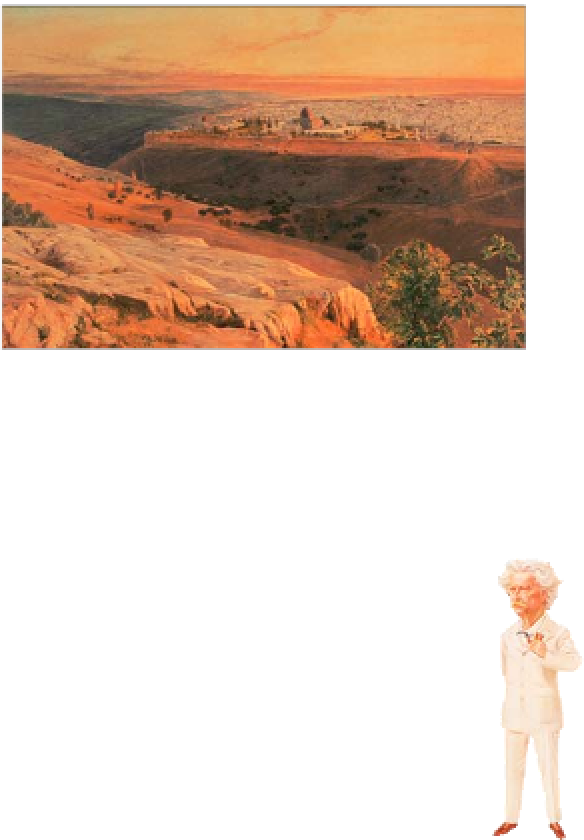Travel Reference
In-Depth Information
THE ARTISTS
With the writers came the
artists, the best-known and
most prolific of whom was
David Roberts, a Scot who
visited the Holy Land in
1839. He produced an
enormous volume of very
precise lithographs, collected
and published in 1842,
which ensured him fame in
his own lifetime. His work
remains ubiquitous today,
adorning almost every book
published on the Holy Land
(see pp8-9)
. Better known for
his whimsical verse, artist,
writer and traveller Edward
Lear (1812-63) spent time in
the Holy Land, painting a
fine series of watercolours.
The English evangelical
painter William Holman
Hunt, who belonged to
the Pre-Raphaelite
movement, settled on
Ha-Neviim Street in
Jerusalem in 1854,
where he painted
several of his most
famous works. This
century, Russian-born
Jewish artist Marc Chagall
(1887-1985) has become
closely identified with
Jerusalem. His naïve-
styled work, with its
strong Jewish themes
can be seen at the
Israel Museum
(see pp132-7
7
,
Jerusalem from the Mount of Olives
(1859) by Edward Lear
London. He is remembered
in Jerusalem today through
“Warren's Shaft”, the popular
name for the Jebusite well
at the City of David archaeo-
logical site
(see p115)
.
both visiting in the mid-19th
century were hardly any
more enamoured. Melville,
author of
Moby Dick
, thought
the Holy Sepulchre church “a
sickening cheat”. Twain was
even more caustic,
commenting in his 1895
book
The Innocents
Abroad
, “There will be
no Second Coming.
Jesus has been to
Jerusalem once and he
will not come again.”
The tradition of scathing
comment continued in
the 20th century with
George Bernard Shaw
advising Zionists in the
1930s to erect notices at
popular holy sites
stating, “Do not bother
to stop here, it isn't
genuine.” More recent
writers have been kinder:
Nobel laureate Saul Bellow
produced a warm-hearted
account of the city in
To
Jerusalem and Back
(1976).
THE WRITERS
As the ground was broken
by the early explorers, a
steady stream of adventurous
travellers followed in their
wake, recording their experi-
ences for eager audiences
back in the West. François
René de Chateaubriand's
brief sojourn in Jaffa, Jeru-
salem, Bethlehem, Jericho
and the Dead Sea area as
related in his
Journey from
Paris to Jerusalem
(1811)
initiated the fashion for
travel journals and descrip-
tions of the Holy Land
among 19th-century literati.
The French poet Alphonse
de Lamartine followed in his
tracks in 1832,
recording his
experiences in
Remembrances of a
Journey to the East
.
In 1850 the creator
of Madame Bovary,
Gustave Flaubert,
visited Palestine
and Egypt, but
found Jerusalem
oppressive, writing
in his diary, “It
seems as if the
Lord's curse hovers
over the city.”
American authors
Herman Melville
and Mark Twain,
Mark Tw ain
in tapestry form at the
Knesset
(see p131)
, and in
stained-glass windows at the
synagogue of the Hadassah
Hospital
(see p139)
.
The Finding of the Saviour in the Temple
(1854-60) by William Holman Hunt
















